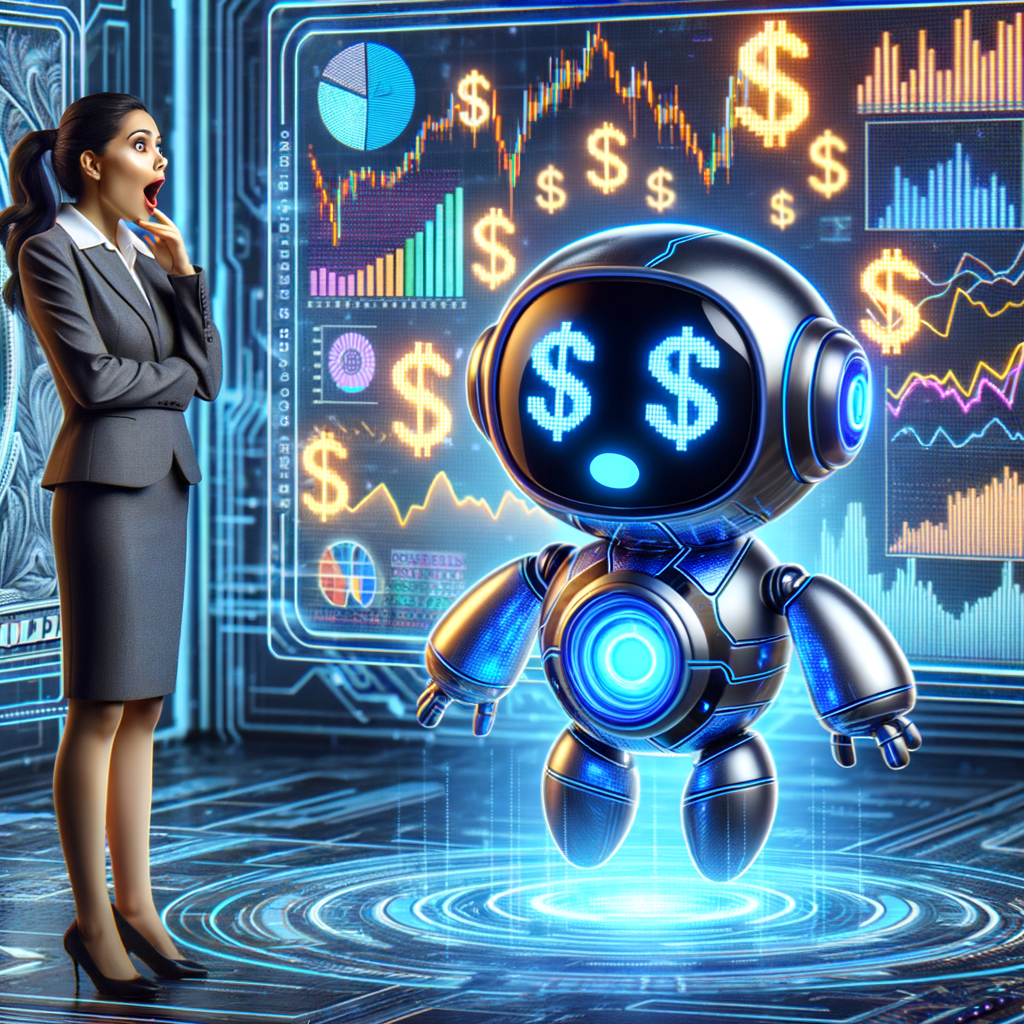Understanding the Basics of Forex Trading and AI Integration
Forex trading, or foreign exchange trading, involves the exchange of one currency for another on a global marketplace. It is one of the largest and most liquid markets in the world, operating 24 hours a day, five days a week. The mechanics of forex trading revolve around currency pairs, with traders speculating on the rise or fall of one currency against another. As this market continuously evolves, technology has played a critical role, with Artificial Intelligence (AI) emerging as a transformative force.
AI integration in forex trading encompasses a variety of technologies, including algorithms, machine learning, and data analytics. These technologies are designed to enhance trading strategies by processing vast amounts of data and identifying patterns that humans may overlook. In the current landscape, AI is not just an add-on; it is becoming a core component of trading strategies for institutional and retail traders alike. This shift signifies a move toward more data-driven decision-making, replacing traditional methods that may be slower and less efficient.
Furthermore, the integration of AI in forex trading has become possible due to advancements in computing power and algorithms. With the ability to analyze historical data, market sentiment, and indicators in real-time, AI systems can execute trades with unprecedented speed and accuracy. This capability allows traders to capitalize on price movements more effectively, thereby increasing potential profits while minimizing risks.
As we delve deeper into the functionalities of AI in forex trading, it is essential to understand how it enhances market analysis and decision-making. The ability to process information and interact with various data sources is a game-changer for traders aiming to stay competitive in the fast-paced forex environment.
How AI Enhances Market Analysis and Decision-Making
AI dramatically improves market analysis by offering tools that perform deep data dives and analyze market conditions more effectively than human traders. Traditional analysis methods often rely on historical data and technical indicators, but AI can incorporate a multitude of variables, including economic indicators, news sentiments, and geopolitical events. By utilizing Natural Language Processing (NLP), AI systems can assess the potential impact of news articles and economic reports on currency values, providing traders with a more comprehensive market overview.
Moreover, AI algorithms can identify patterns and trends that might not be apparent through conventional analysis. These algorithms can analyze price movements, volatility, and volume data to predict future price changes with a greater degree of accuracy. For instance, by employing advanced statistical techniques, AI can ascertain correlations between various currency pairs, helping traders make informed decisions based on historical relationships.
Another critical aspect of AI in forex trading is its capacity for continuous learning. Machine learning algorithms improve their performance by learning from past trades, thereby refining their predictive capabilities over time. This iterative learning process enables traders to adapt to market changes swiftly, ensuring their strategies remain relevant and effective in a dynamic environment.
In summary, AI elevates market analysis and decision-making by combining vast data processing capabilities with continuous learning. This integration not only enhances the precision of trading strategies but also empowers traders to make informed decisions based on a broader understanding of market dynamics.
The Benefits of AI in Forex Predictive Analytics
The potential of AI in forex predictive analytics is vast. With the ability to analyze massive datasets and recognize patterns, AI-driven predictive models are designed to forecast currency movements with a high level of accuracy. The key advantage of these models lies in their capacity to incorporate both historical and real-time data, allowing them to adapt to market changes instantaneously.
AI-enhanced predictive analytics can significantly reduce the time traders spend on research and analysis. Automated systems can generate insights and recommendations at a much faster rate than manual analysis. This efficiency allows traders to focus on executing trades and managing their portfolios rather than getting bogged down by data collection and interpretation.
Moreover, AI can help mitigate emotional biases that often cloud human judgment. In the high-stakes world of forex trading, emotions such as fear and greed can lead to impulsive decisions. AI systems, grounded in logic and data-driven analysis, can guide traders toward more rational decision-making. By relying on algorithmic insights, traders can adopt a more disciplined approach to their strategies.
Lastly, the deployment of AI predictive analytics can lead to more accurate risk management. By forecasting potential shifts in currency values, traders can adjust their positions accordingly, reducing the likelihood of significant losses. The ability to anticipate market trends enhances overall portfolio management and positions traders for long-term success.
Evaluating the Risks of AI in Foreign Exchange Trading
While the benefits of AI in forex trading are substantial, it is essential to recognize the associated risks. One major concern lies in the reliability and accuracy of AI algorithms. If these algorithms are flawed or based on inaccurate data, they can lead to poor trading decisions, resulting in substantial financial losses. Traders must remain vigilant and continuously evaluate the performance of their AI systems to ensure they operate effectively.
Another risk involves market volatility. AI systems operate on historical data, which may not always account for sudden and unpredictable market events. For instance, geopolitical tensions or natural disasters can lead to price swings that AI models may not be able to predict accurately. Consequently, traders relying solely on AI may expose themselves to risks if they do not maintain a level of awareness regarding current events.
Furthermore, algorithmic trading strategies can lead to unintended consequences, such as flash crashes, when multiple algorithms react simultaneously to market conditions. The interconnectivity of these systems means that a single event could trigger a cascade of automated trades, resulting in significant disruptions in market stability. Traders must therefore strike a balance between leveraging AI capabilities while understanding the potential for systemic risks.
Lastly, there are cybersecurity concerns to consider. As the reliance on AI systems increases, so does the potential for cyber-attacks. Malicious actors could target trading algorithms, leading to unauthorized trades or data breaches. Traders and institutions must invest in robust cybersecurity measures to safeguard their AI systems and maintain their integrity.
AI Trading Bots: Revolutionizing Forex Strategies and Execution
AI trading bots are transforming the landscape of forex trading by automating entire trading processes. These bots analyze market trends, execute trades, and manage positions without human intervention, allowing traders to capitalize on market opportunities more efficiently. By utilizing AI algorithms, these bots can identify optimal entry and exit points based on real-time data and predefined parameters.
One of the significant advantages of AI trading bots is their ability to operate around the clock. Unlike human traders, who require rest and can be influenced by emotions, AI trading bots can continuously monitor the forex market and react to changes instantly. This capability ensures that traders do not miss potential profit opportunities during off-hours or while engaged in other activities.
Additionally, AI trading bots can backtest strategies using historical data to determine their viability before executing them in live markets. This feature allows traders to refine their strategies and reduce the likelihood of losses from untested approaches. By offering insights into the effectiveness of specific strategies, these bots empower traders to make data-driven decisions.
However, the proliferation of AI trading bots also raises questions regarding market fairness and transparency. As more traders rely on automated systems, concerns emerge about the potential for market manipulation and the erosion of traditional trading practices. It is essential for regulators and industry participants to establish guidelines that ensure the responsible use of AI in forex trading.
The Role of Machine Learning in Currency Pair Forecasting
Machine learning has emerged as a cornerstone of AI-driven currency pair forecasting in forex trading. By employing advanced algorithms capable of learning from historical data, machine learning models can identify complex patterns and trends in currency movements. This capability allows traders to make predictions based on statistical analysis rather than relying solely on intuition or traditional methods.
One of the critical advantages of machine learning is its ability to process vast amounts of data from various sources, including economic indicators, market sentiment, and historical price movements. By analyzing this data, machine learning models can discern relationships that may not be apparent through conventional analysis. This comprehensive approach enhances the accuracy of currency pair forecasts, providing traders with valuable insights into potential market shifts.
Moreover, machine learning models can adapt to changing market conditions by recalibrating their algorithms based on new data. This adaptability is crucial in the fast-paced forex market, where conditions can change rapidly due to economic events or geopolitical developments. By harnessing machine learning, traders can stay ahead of the curve and adjust their strategies to align with evolving market dynamics.
Despite its advantages, the use of machine learning in currency pair forecasting is not without challenges. The complexity of the models can lead to overfitting, where a model performs well on historical data but fails to predict future movements accurately. To mitigate this risk, traders must adopt rigorous validation processes and ensure that their models are robust and generalizable.
Ethical Considerations of AI in Forex Trading Practices
As AI continues to reshape forex trading, ethical considerations are becoming increasingly important. One primary concern is the potential for algorithmic trading to exacerbate market inequality. Wealthier traders and institutions typically have access to more sophisticated AI technologies, which could give them an unfair advantage over retail traders. This disparity raises questions about the level playing field in the forex market and the implications for smaller participants.
Additionally, the use of AI could lead to a reduction in human oversight. When traders rely extensively on automated systems, there is a risk of overlooking critical market factors that may not be captured by algorithms. This dependence could lead to a lack of accountability, making it challenging to assign responsibility for trading decisions and outcomes.
Moreover, the potential for market manipulation through AI-driven trading strategies is a growing concern. If multiple traders deploy similar algorithms, it could result in coordinated trading behavior that disrupts market stability. Regulators must establish clear guidelines to prevent such manipulative practices, ensuring a fair trading environment for all participants.
Finally, transparency in AI systems is essential to fostering trust within the forex market. Traders should have access to information about how AI algorithms operate and the factors influencing their decisions. By promoting transparency and ethical practices, the forex industry can harness the benefits of AI while minimizing potential risks.
Future Trends: The Evolving Landscape of AI in Forex Markets
The future of AI in forex trading is poised for continued advancement, driven by innovations in technology and data analysis. One key trend is the increasing integration of AI with other emerging technologies, such as blockchain and the Internet of Things (IoT). By combining these technologies, traders can access real-time data from various sources, enhancing their decision-making capabilities and enabling more sophisticated trading strategies.
Another notable trend is the rise of personalized trading experiences powered by AI. As algorithms become more adept at analyzing individual trader behavior, platforms may offer tailored recommendations based on each trader’s preferences and risk tolerance. This level of personalization could democratize access to advanced trading strategies and improve overall trader performance.
Moreover, the implementation of AI in regulatory frameworks is likely to gain traction. Regulators will increasingly rely on AI technologies to monitor market activity and identify potential manipulative behavior. By enhancing oversight, regulators can foster a safer trading environment while ensuring that ethical standards are upheld.
Finally, as AI becomes more entrenched in forex trading, the demand for skilled professionals who can understand and manage these systems will grow. The need for traders who can interpret AI-generated insights and adapt their strategies accordingly will be paramount. Education and training in AI technologies will become essential for traders seeking to remain competitive in the evolving landscape of forex markets.
| Benefits of AI in Forex Trading | Challenges of AI in Forex Trading |
|---|---|
| Enhanced market analysis and decision-making | Reliability and accuracy concerns |
| Increased efficiency and speed of trading | Potential for market volatility |
| Improved risk management and discipline | Cybersecurity risks |
| Continuous learning and adaptability | Ethical considerations and market inequality |
Q&A Section
Q: What is AI’s primary role in forex trading?
A: AI enhances market analysis, automates trading processes, and improves predictive analytics, allowing traders to make more informed decisions.
Q: Can AI trading systems completely replace human traders?
A: While AI can automate many tasks, human oversight is crucial for understanding market nuances and managing risks effectively.
Q: What are the risks associated with AI in forex trading?
A: Risks include algorithm reliability, market volatility, potential for system failures, and ethical concerns regarding market manipulation and inequality.
Q: How can traders ensure they use AI responsibly?
A: Traders should continuously evaluate AI system performance, stay informed about market conditions, and maintain ethical standards in their trading practices.
Q: What trends can we expect to see in the future of AI in forex trading?
A: Future trends include greater integration of AI with other technologies, personalized trading experiences, increased regulatory oversight, and a growing demand for skilled professionals in AI systems.





Wow, AI sounds amazing for trading! Can’t wait to try it out!
Such a cool read! I’m excited to see how AI evolves in forex.
‘Market manipulation’ sounds scary, but overall this looks very promising!
This article is really helpful! I love learning about AI in forex!
Great insights! I feel more confident about forex now!
‘Automated systems’ can save so much time. This is awesome!
‘Personalized trading experiences’ sound perfect for everyone. Thanks for the info!
I didn’t know AI could change trading so much! Exciting times ahead!
AI is the future of trading! Thanks for sharing this info!